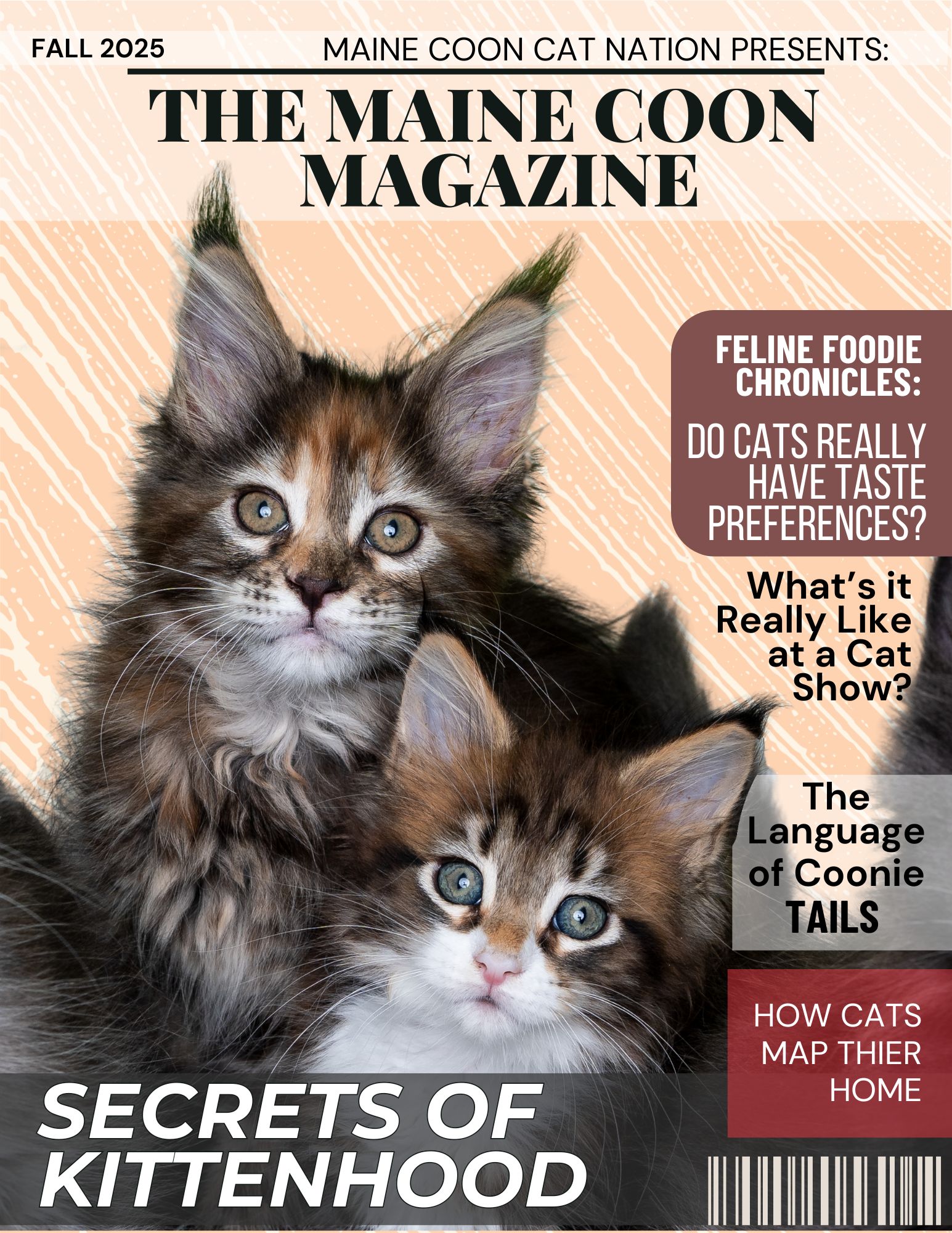- Home
- Maine Coon Care
- Safety During Natural Disasters
Safety During Emergencies and Natural Disasters
A Different Kind of Instinct
Those viral videos of dogs "guarding" their homes or wagging their tails at intruders always make the rounds, and they never fail to spark the same question: what would your Coonie do?
If you like this, you'll love our fun, free Daily Digest!

If you like this, you'll love our fun, free Daily Digest!

With Hurricane Melissa in the news this week, it's a good time to talk about how cats really respond to chaos like storms, alarms, strange noises - all those moments when the world gets loud and unpredictable.
This reminded me of a lovely old message I once received from a reader named Judy, who wrote all the way from the UK during Hurricane Irene.
Her letter was so thoughtful, and her questions are still just as relevant today.
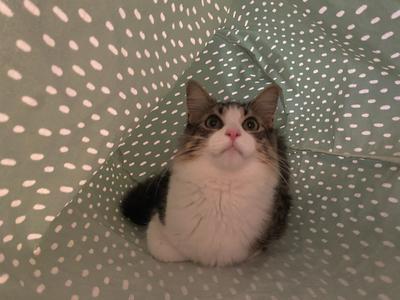 Oliver, from our 2022 albums
Oliver, from our 2022 albumsThe Feline Emergency Mindset: How They Sense and React
Cats aren't wired for confrontation like dogs are. Where dogs tend to meet chaos head-on by defending, barking, sometimes heroically standing between their family and danger - cats follow a different, much older playbook: observe, assess, and vanish if necessary.
That's not fear. It's ancient survival logic. A cat’s first response to uncertainty is stillness. This freeze lets them gather information from the air, floor, and even us.
They pick up on things we can't consciously notice: shifts in air pressure, vibrations, static buildup, and our own tension.
When they decide it's time to act, it's immediate. What does this look like? Flight to a memorized hiding spot. Quiet watching from a high shelf. Or shadowing us from room to room.
They may not guard the door, but they're tuned in to every creak and rumble.
Researchers who've observed cats during earthquakes and hurricanes have noted how often they sense environmental changes before we do.
That's why you'll sometimes see pacing, hiding, or extra vocalizing before a storm even reaches the forecast radar. It's not panic - it's early warning.
Real Life: Hurricane Irene and the Cats
When Hurricane Irene brushed through Maine years ago, Judy's note landed in my inbox just as the trees were starting to sway.
Her words stuck with me because they captured exactly how cat owners think during emergencies: practical, protective, and a little anxious about doing the right thing.
From the Archives: Judy’s Question (2011)
"Hi Carrie,
I hope you and your family keep safe through Hurricane Irene's destructive efforts.
How do you and yours prepare?
- Do you shut your cats in the basement?
- Do you keep them with you?
- Do you give them Feliway to calm them?
I know Maine is on the coast and there's talk of a storm surge. Hope you guys are living on high ground! :)
Buddy is such a wonderful, amusing, and mischievous companion. I groom him outside and watch his hair float high on the breeze, soaring to about 20 feet across the neighbor’s garden…"
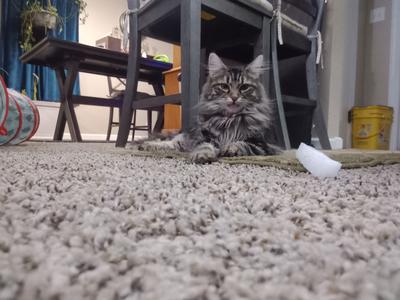 Rainey Skye, from our Rescued Coonies Album
Rainey Skye, from our Rescued Coonies AlbumMy Reply Back Then
"Thanks so much for your concern! Thankfully, we're fine. Up here in Maine, we're not used to hurricanes!
Irene has been blowing all day, but Alice and Leo have no idea anything's out of the ordinary. Leo's watching the Weather Channel on my husband's lap, and Alice is purring up a storm right here next to me.
If we ever had to evacuate, we'd take everyone - even the guinea pig! The carriers are always ready just in case.
If we were worried about branches or flooding, I'd confine them to the basement for safety, but otherwise I keep them close. That's what keeps me calm, too."
Reading that exchange again years later, I realized how timeless it is.
Every storm season brings the same question: where should the cats be if something happens?
The answer, as always, depends on knowing how your cat reacts to fear.
One may tend to stay close; another might typically retreat to a quiet corner. Both are right, because both responses are instinctive.
Knowing their "safe spots" ahead of time makes all the difference when every minute counts.
How Cats React During a Natural Disaster
Whether it's a hurricane, tornado, fire, or an unexpected intruder, our felines rely on the same ancient instincts that kept their ancestors alive.
They don't panic or posture the way dogs do. They listen, freeze, and assess.
Every feline handles trouble in their own way. The trick is noticing how they respond so you can quickly make the right move when things turn unpredictable.
What Do Cats Do During a Tornado?
When the sky turns green and the air feels heavy, most kitties know long before the sirens start.
A rapid drop in air pressure and the low-frequency rumble of approaching storms send them straight to ground level. For example, under beds, into closets, or down basement stairs.
If you live in tornado country, make your safe space their safe space. Keep a carrier, treats, and a blanket there year-round.
During warnings, move your Coonie into that area early and close the door.
They'll feel safer in a small, familiar space than out in the open where the noise is overwhelming.
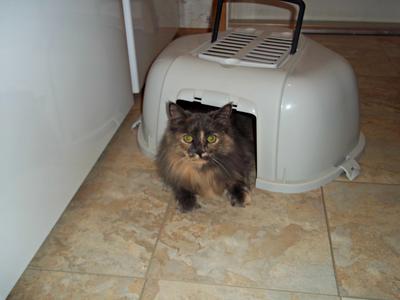 Mazy
MazyDo Cats Sense Earthquakes Before They Happen?
Many owners swear their felines act "off" before tremors hit by pacing, meowing, or hiding for no clear reason.
Studies suggest they may detect minute vibrations or electromagnetic changes through their whiskers and paw pads.
If you're in an earthquake-prone area, secure heavy furniture and wall shelves that could topple onto your furry family member.
After a quake, keep doors closed until you're sure the environment is stable; frightened kitties sometimes bolt outdoors even if they're normally calm.
How Do Cats React to Floods or Heavy Rain?
Floods trigger a different instinct: climb. You'll often find a Maine Coon perched on the back of the couch or the windowsill long before you notice the rising water. It's their version of taking higher ground.
If flooding is possible, move carriers and essentials upstairs or onto counters before you need them.
Cats dislike water so deeply that even shallow flooding can make them panic. Keep calm and speak softly; they'll take their cue from your voice.
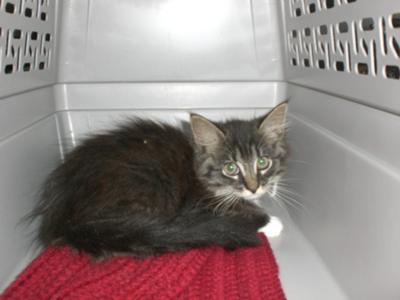 Rockie, from our 2011 Albums
Rockie, from our 2011 AlbumsCold snaps can cause just as much stress as heavy rain. Our Winter Weather Tips page covers how to keep indoor kitties comfy when temperatures drop.
What Happens During a Fire?
Fire is one of the most frightening emergencies for any pet.
The smell of smoke and the crackle of flames usually send felines hiding under furniture - not running toward the door. That's why knowing their "safe mode" spot ahead of time matters.
Keep carriers near those areas so you can scoop them up quickly.
If you ever face a house fire, call to them in a familiar tone and never waste precious time searching the whole house.
Go straight to the places they always choose when scared. That predictability is your advantage.

On Tarzan's page, Kim tell the story of rescuing him from a burned-down home.
Once feral and wary, he slowly learned to trust and now lives the calm, comfortable life every cat deserves.
How Do Cats React to Intruders?
Dogs bark, cats calculate. A Coonie may go completely silent, shadow you from room to room, or perch somewhere high to monitor.
Some especially bonded felines will position themselves between you and the door - not to fight, but to stay close.
Their instinct isn't aggression, or even protection - even if it looks like it; it's awareness. They read your posture, tone, and breathing.
If you act calm, they stay calm. It’s "social vigilance," not defense, but it's still their way of saying, I'm with you.
What About Hurricanes or Tropical Storms?
Hurricanes combine everything felines dislike: noise, vibration, wind pressure, and changes in barometric pressure.
Long before the first gust, your furry family member might pace, meow, or vanish into their favorite hiding place.
During Hurricane Irene, Leo watched the Weather Channel from my husband's lap while Alice purred beside me, completely unbothered.
But I still had their carriers ready. That's key: let them feel secure where they choose to be, while you quietly prep for "just in case."
With Hurricane Melissa now in the headlines, it's a reminder to check microchips, refresh emergency supplies, and make sure every pet has a travel plan.
They won't guard the door, but they'll trust you to guide them through it.
What About Power Outages or Loud Storms?
Even short-term outages can rattle sensitive felines. The sudden silence of electronics, or bursts of thunder, can make them think something's wrong with the world.
Use soft voices, a flashlight instead of candles, and bring their bed or blanket into the same room you're in.
If your Coonie already associates one room with comfort - say, where you watch TV together - that's where you should wait out the storm.
Familiar scent and routine calm their heartbeat faster than any pheromone spray.
How to Reassure Your Cat After an Emergency
After the danger passes, let your kitty reset on their own timeline. Don't force snuggles or coax them from hiding too soon.
Offer food, water, and calm conversation. Cats process stress quietly. They'll come out when their instincts say the coast is clear.
If you notice unusual hiding, appetite loss, or clinginess that lasts more than a few days, a vet visit can rule out lingering anxiety or injury.
But most Coonies bounce back beautifully once the household energy returns to normal.
Bottom line: our felines may not guard the house like dogs, but their instincts are perfectly tuned for survival.
All we have to do is meet them halfway, by planning ahead, keeping calm, and understanding how they think when nature (or life) gets unpredictable.
Emergency Preparedness
Each Coonie has their own 'safe mode' - that favorite corner or hiding spot where instinct takes over.
When you know their patterns, you can work with their instincts when designing your emergency plan.
Every pet parent should have a disaster preparedness plan. Here's what helps most when chaos hits:
Quick Checklist for Any Emergency
- Know your cat's safe spot.
Every feline has one. Make sure you can access it quickly if you ever need to evacuate.
-
Keep carriers handy.
Don't stash them in the attic or behind the holiday decorations. Your furry family member should recognize the carrier as something normal, not scary.
-
Prep ahead.
Update ID tags and microchips, and note which local shelters or hotels accept pets. Having that list saved in your phone makes life easier when every second counts.
-
Use familiar comforts.
A favorite blanket, a worn T-shirt that smells like you, or a calming pheromone spray can all help.
If you're caring for a kitten, extra safety measures matter. Our kitten safety guide walks through what to expect during those curious early months.
- Don't chase - anticipate.
If you must evacuate, meet them where they naturally run to. They’ll feel safer following your calm lead than being chased in panic.
If you're building your home safety checklist, remember everyday hazards too, like toxic plants and common cat poisons.
Guardian Cats and Social Vigilance
Some Maine Coons show a special kind of loyalty during stressful moments. They stay close, watch every move, and quietly position themselves nearby.
It's not guarding in the canine sense; it's social vigilance.
They're reading you, not the threat. When you move, they move. When you're calm, they settle.
If your Coonie has ever planted himself between you and the door during a thunderstorm, you've probably seen this instinct in action. That wordless reassurance that says, I've got eyes on things too.
The Takeaway
They won't guard the door, but they'll weather the storm with you if you think like they do.
Preparation and empathy are all it takes to make sure both of you come out safe (and a little wiser) on the other side.
Prepare with them, not just for them.
Know their habits. Respect their instincts.
That's what true partnership looks like between a human and their feline.
Back to Everyday Calm
When the storm passes, life goes back to walks, naps, and catnip. You can find more everyday tips for happy, healthy kitties on our Cat Care Hub.
